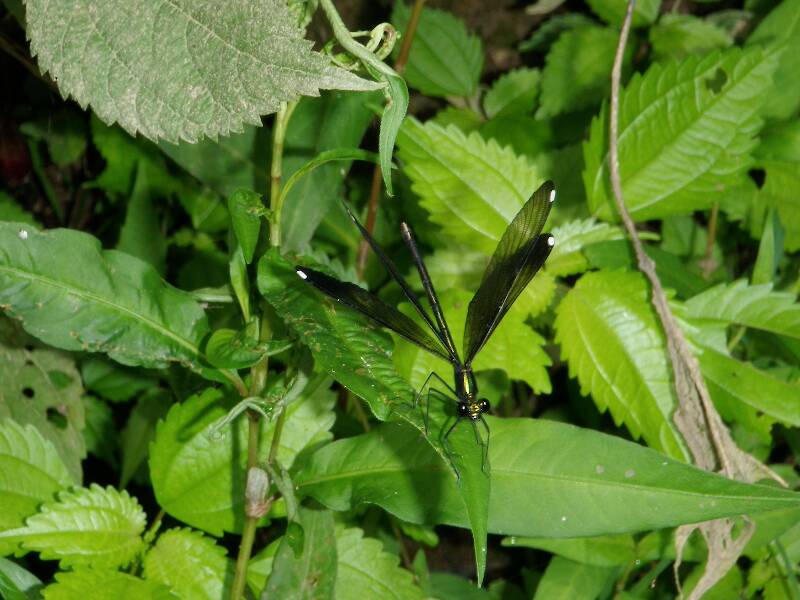
Hex Mayflies
Hexagenia limbata
The famous nocturnal Hex hatch of the Midwest (and a few other lucky locations) stirs to the surface mythically large brown trout that only touch streamers for the rest of the year.
Featured on the forum

Troutnut is a project started in 2003 by salmonid ecologist Jason "Troutnut" Neuswanger to help anglers and
fly tyers unabashedly embrace the entomological side of the sport. Learn more about Troutnut or
support the project for an enhanced experience here.

Kcnal on Jul 19, 2010July 19th, 2010, 12:56 pm EDT
As you will tell I'm an absolute beginner in learning about some of the insects founds on the waterway. I have some material coming to cross reference, but wanted to put these out there for any help and comments...
Dryfly on Jul 19, 2010July 19th, 2010, 2:27 pm EDT
Its a purdy damselfly.
Kcnal on Jul 19, 2010July 19th, 2010, 3:30 pm EDT
I know there are an amazing number of colors, etc...
I have some pictures taken from the same location at the same time with a varying array of these in terrific, but different colors.
Does anyone know if the colors indicate a different (family, for lack of a more educated term)?
There are some just amazing electric greens and varying colors.
I have some pictures taken from the same location at the same time with a varying array of these in terrific, but different colors.
Does anyone know if the colors indicate a different (family, for lack of a more educated term)?
There are some just amazing electric greens and varying colors.
Konchu on Jul 19, 2010July 19th, 2010, 3:35 pm EDT
Sometimes, the colors are different just between the males and females of the same species, especially with the showy damselflies.
GONZO on Jul 19, 2010July 19th, 2010, 4:00 pm EDT
This looks like one of the Broadwinged Damselflies known as Jewelwings, perhaps a female Ebony Jewelwing (Calopteryx maculata).
Kcnal on Jul 19, 2010July 19th, 2010, 4:10 pm EDT
Thanks for all the replies. I understand it takes time and research..
Do you have a link or other material you can recommend?
Do you have a link or other material you can recommend?
GONZO on Jul 19, 2010July 19th, 2010, 4:54 pm EDT
Do you have a link or other material you can recommend?
For damselflies/dragonflies, try this one:
http://www.odonatacentral.org/index.php/PageAction.get/name/HomePage
Jmd123 on Jul 19, 2010July 19th, 2010, 6:14 pm EDT
That's a female Calopteryx maculata for sure. I see them all the time here in southern Michigan, on just about every stream. The white spots on the wings are characteristic for the female of the species. The bright metallic green ones with smoky black wings that you are seeing are the males of this same species. Yep, they're downright gorgeous!
My entomology background includes a MS from Michigan State, 1991. Not that it helps me get much work, but it sure was interesting, and still is. I think of insects, not just aquatic ones, as little tiny friends and living jewels that seldom fail to delight me - unless, of course, they are trying to suck my blood...
Jonathon
My entomology background includes a MS from Michigan State, 1991. Not that it helps me get much work, but it sure was interesting, and still is. I think of insects, not just aquatic ones, as little tiny friends and living jewels that seldom fail to delight me - unless, of course, they are trying to suck my blood...
Jonathon
No matter how big the one you just caught is, there's always a bigger one out there somewhere...
Quick Reply
Related Discussions
Topic
Replies
Last Reply
3
Dec 10, 2015
by PaulRoberts
by PaulRoberts




